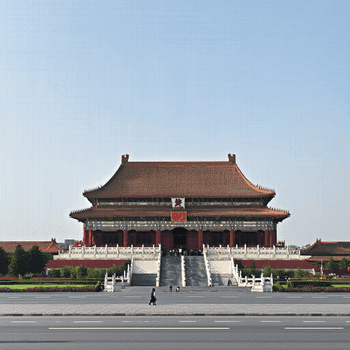
In China, workplace attire is more than just a matter of personal style—it reflects professionalism, respect, and cultural awareness.
Whether you’re an expat starting a new job or a business traveler attending meetings, understanding the nuances of Chinese dress codes can help you make a positive impression and build strong professional relationships.
This guide explores the key principles of workplace attire in China, cultural considerations, and practical tips to help you dress for success.
The Role of Appearance in Chinese Professional Culture
In Chinese workplaces, appearance is closely tied to respect and credibility.
This stems from Confucian values, which emphasize harmony, hierarchy, and the importance of presenting oneself appropriately in social and professional settings.
Dressing well is seen as a sign of respect for colleagues, superiors, and business partners.
For more on Confucian values and their influence on modern Chinese culture, visit Britannica’s Confucianism Overview.
General Dress Code Guidelines
Conservative and Professional Attire
Business attire in China leans toward the conservative. Men typically wear suits, dress shirts, and ties, while women opt for suits, dresses, or blouses with skirts or dress pants.
Neutral Colors
Stick to neutral tones like black, navy, gray, and white. Bright or flashy colors are generally avoided in professional settings.
Quality Over Brand
While designer brands are appreciated, the focus is on the quality, fit, and neatness of your clothing rather than the label.
Minimal Accessories
Accessories should be understated. Avoid large or flashy jewelry, as it can be seen as unprofessional.
For more insights into global business attire, check out Forbes’ Guide to Professional Dress.
Dress Code Tips for Men
Suits
A dark, well-tailored suit is essential for formal meetings. Lighter colors may be acceptable in less formal settings or during summer.
Shirts and Ties
Stick to white or light-colored shirts paired with conservative ties. Avoid bold patterns or bright colors.
Shoes
Polished leather shoes in black or brown are ideal. Avoid casual footwear like sneakers.
Grooming
Maintain a neat appearance with trimmed hair and facial hair. Clean, short nails are also important.
Dress Code Tips for Women
Suits and Dresses
Women can wear suits with skirts or pants. Dresses should be knee-length or longer and avoid being too tight or revealing.
Blouses and Tops
Choose neutral or soft-colored blouses. Patterns should be subtle and professional.
Footwear
Closed-toe shoes with moderate heels are preferred. Avoid overly casual or excessively high-heeled shoes.
Jewelry and Makeup
Keep jewelry minimal and makeup natural. A simple watch, small earrings, and light makeup are appropriate.
Cultural Considerations
Respect for Hierarchy
Dressing formally is a way to show respect for senior colleagues and business partners.
Seasonal Adjustments
In summer, lighter fabrics and colors may be acceptable, while winter calls for heavier clothing.
Regional and Industry Variations
Dress codes can vary by region and industry. For example, tech companies in cities like Shenzhen may embrace business casual, while finance firms in Beijing or Shanghai often require formal attire.
Traditional Attire for Special Occasions
During national holidays or formal events, wearing traditional Chinese attire (e.g., a cheongsam for women or a Tang suit for men) can demonstrate cultural respect.
For more on traditional Chinese clothing, visit China Highlights’ Guide to Traditional Attire.
Practical Tips for Expats
Observe and Adapt
Pay attention to how your colleagues dress and adjust your attire accordingly.
Invest in Tailoring
Tailored clothing ensures a polished and professional appearance.
Pack for All Seasons
If relocating, bring a variety of professional attire suitable for different seasons and occasions.
Stay Professional on Casual Days
Even on casual Fridays, maintain a smart casual look. For men, this might mean a dress shirt without a tie, while women can opt for business casual dresses or blouses with slacks.
Modern Trends in Workplace Attire
As younger generations and globalization influence Chinese workplaces, some industries are adopting more relaxed dress codes.
For example, tech startups in cities like Hangzhou and Shenzhen often embrace business casual, while traditional industries like law and finance remain more formal.
For a deeper dive into modern workplace trends in China, explore McKinsey’s China Insights.
Conclusion
Understanding and adhering to workplace dress codes in China is key to making a positive impression and integrating into the professional culture.
By dressing conservatively, respecting cultural norms, and staying attuned to industry-specific trends, you can ensure your appearance reflects professionalism and respect.
For more tips on thriving in China’s professional environment, check out our other guides on Ikky in China.



